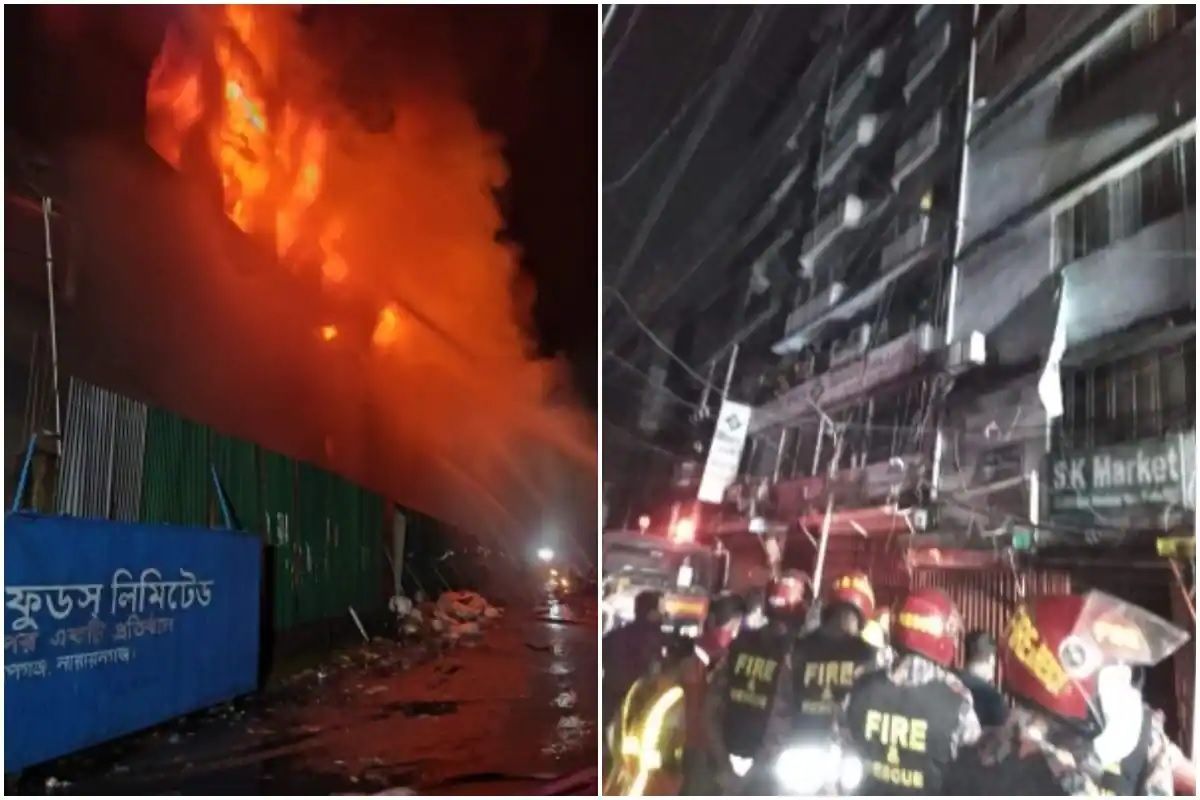Dhaka: Bangladesh police on Saturday arrested eight people, including the owner of a factory and his two sons, in connection with the massive fire in their food processing unit which killed at least 52 people. The fire broke out at the factory in Narayanganj outside Bangladesh’s capital on Thursday. The authorities have put the death toll at 52 so far.
Forty-nine workers died after being trapped on the third floor with its only exit locked. Three others also died after jumping off the six-storey factory. Home Minister Asaduzzaman Khan Kamal said the owner, several directors and managers of the Sajeeb Group and its sister concern Hashem Food Ltd were among those taken into custody by police.
“No one will be spared if their negligence is found over the incident,” the minister warned. A magistrate court subsequently ordered the eight, including the owner’s two sons, to be remanded in a four-day custody for interrogation against a police prayer seeking 10 days for each of them.
The development came as fire service rescuers searched for more bodies or survivors at the building throughout the night but found none while scores of people said their relatives remained missing.
“We are continuing searches,” a fire service official told newsmen as it took firefighters more than 24 hours to douse the blaze. Apart from Sajeeb Group Chairman and Managing Director Md Abul Hashem, his sons, including Deputy Managing Director Hasib Bin Hashem and Director Tareq Ibrahim, were also named in the case, according to Narayanganj’s Superintendent of Police Zaidul Alam.
Sajeeb Group is the parent company of Hashem Foods Ltd, the scene of the devastating fire. Debashish Bardhan, a senior fire official, said they could not recognise the dead as the bodies were burnt badly.
The home minister earlier visited the gutted factory. The Home Ministry formed a committee to look into the fire incident. The probe report will be submitted very soon and action will be taken quickly as well, the report said.
Narayanganj’s Superintendent of Police (SP) Alam said they will bring to book the others responsible for the tragic incident and the subsequent deaths after interrogating the eight arrestees.
“Police have filed a murder case with Rupganj Police Station against them. If we find anyone involved during the investigation, we will include them too,” Alam said.
The action was taken as it emerged that many children were working in the factory. Hashem, however, denied all responsibility for the factory fire and said there should not be any child labour in the factory.
Md Salauddin, the factory’s admin officer, said, “The issue about the age of the workers is wrong.They were hired after reviewing the relevant documents. If the age is low, it is the workers who tampered with the documents.”
The injured are undergoing treatment at Dhaka Medical College Hospital (DMCH) and US-Bangla Medical College and Hospital at Rupganj. Doctors said they collected DNA samples from 37 charred bodies to confirm their identities.
Authorities earlier said the bodies would be handed over to relatives after identification. Rescuers and relatives said children as young as 11 had been working there while most of the workers were teenagers.
“I would have never allowed my son to go to work, if I had the slightest idea what awaited his fate . . .,” a wailing father, Fazlul Haque, said outside the DMCH morgue suspecting his 12-year son Hasnain, who was a fourth grade student, was lying in a pile of charred bodies.
An ailing Haque said he was reluctant to allow him to join the factory but Hasnain convinced him citing needs for money for his treatment. “He (Hasnain) said he would return home when the school would reopen,” he said.
Apart from the Home Ministry probe team, several other agencies and the local administration have also started investigations into the incident.
According to the Fire Service, a huge amount of plastic and packaging materials in the building had fueled the fire in just a few minutes after it broke out. They said the blocked door at the factory’s staircase has caused so many deaths that could have been avoided.
In 2019, at least 70 people died when an inferno ripped through Dhaka flats where chemicals were illegally stored while another fire at an Old Dhaka house which too illegally was used as a chemical warehouse killed at least 123 people in 2010.
Bangladesh imposed tougher safety rules after more than 1,100 people died when a garment factory complex collapsed near Dhaka in 2013, known as the world’s worst factory disaster.
